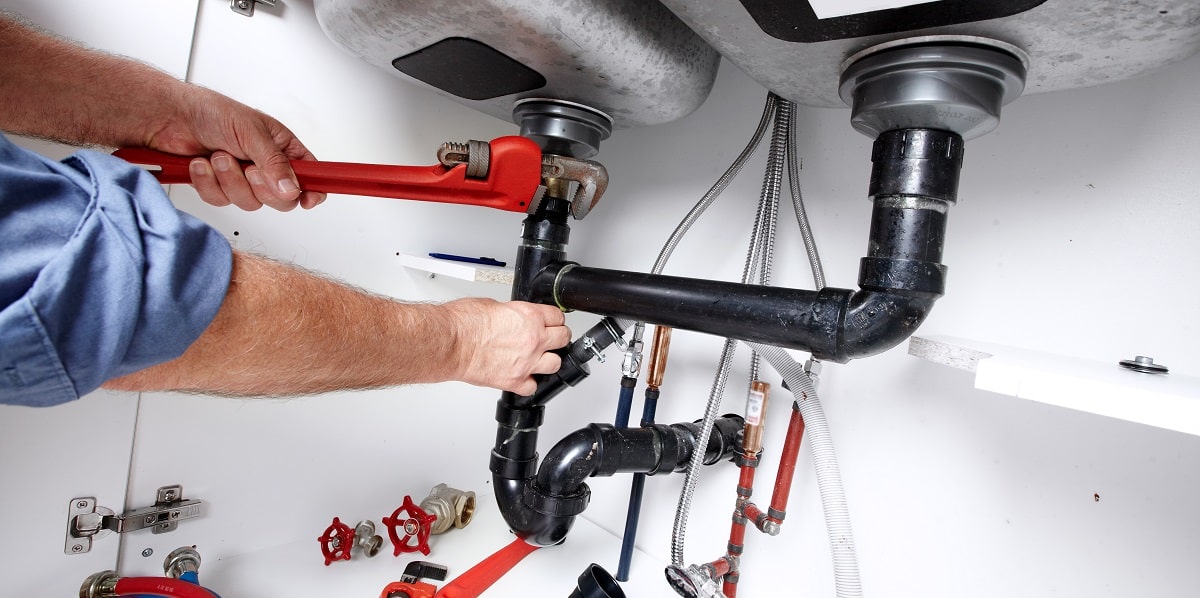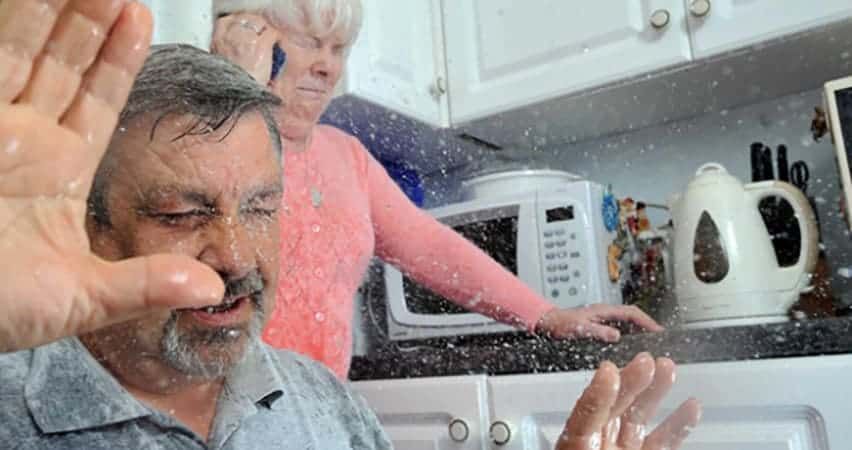They are making several great points on the subject of Main Plumbing Issues Found in Old Houses in general in this great article down the page.

Older homes typically come with appeal, personality, and history, yet they can likewise bring a host of plumbing issues. Whether you're managing maturing pipes, low tide pressure, or leakages, understanding how to deal with these common issues is essential to keeping a risk-free and useful home. In this guide, we'll explore the regular plumbing difficulties faced by older homes and supply practical solutions to maintain your pipes in top form.
Understanding Usual Plumbing Concerns
Aging Pipes
One of one of the most typical concerns in older homes is aging pipelines. Depending upon the period in which your home was developed, the pipelines might be made from products that have actually weakened over time, such as galvanized steel, cast iron, or perhaps lead. These products can rust, come to be breakable, or establish leaks, causing water damages and possible health hazards.
Low Tide Pressure
If you're experiencing low water pressure, it could be due to natural resources, deterioration inside the pipelines, or old components that are no more operating efficiently. This can be a major aggravation, especially in areas like showers and sinks.
Leaking Pipelines
Leaks are one more frequent problem in older homes, typically brought on by corroded or damaged pipes. Even tiny leaks can cause significant water damages, mold and mildew development, and boosted water bills otherwise dealt with promptly.
Obsolete Components
Out-of-date plumbing fixtures such as faucets, bathrooms, and showerheads not just look old yet might also be much less efficient, susceptible to leakages, or inappropriate with modern-day pipes criteria.
Pipeline Corrosion
Rust is a typical trouble in older pipelines, especially those made from galvanized steel or actors iron. Rusty pipelines can limit water circulation, create discoloration, and ultimately cause leakages or pipeline ruptureds.
Analyzing the Problem of Your Plumbing
Checking Noticeable Pipelines
Begin by checking any type of visible pipes in your house, such as those in cellars, crawl spaces, or under sinks. Seek indicators of deterioration, leakages, or corrosion, which can show underlying issues.
Checking for Leaks
Check for leaks by examining areas around faucets, bathrooms, and under sinks. You can likewise monitor your water meter before and after a period of no water use to discover concealed leakages.
Water High Quality Screening
Older pipes can affect the quality of your water. Conduct a water quality test to check for contaminants such as lead, corrosion, or various other pollutants that may be introduced by maturing pipelines.
Solutions for Typical Plumbing Concerns
Changing Aging Pipes
If your home has old, weakening pipes, consider replacing them with modern-day products like copper or PEX. This can be a considerable investment, yet it will stop future problems and improve the safety and security and integrity of your plumbing system.
Fixing Low Water Pressure
To deal with low water pressure, beginning by cleaning or changing old fixtures and removing mineral buildup in the pipelines. If the issue persists, it might be required to change sections of corroded pipes.
Fixing and Replacing Dripping Pipelines
For tiny leaks, you can utilize pipe clamps or epoxy putty as a momentary fix. Nevertheless, it's best to replace dripping pipelines completely to stay clear of additional damage.
Updating Components
Upgrading old components to contemporary, water-efficient versions can enhance your home's plumbing efficiency and minimize water consumption. Seek components with the WaterSense tag for the very best efficiency.
Managing Pipe Rust
If your pipelines are corroded, replacing them with corrosion-resistant products like copper, PVC, or PEX is the best option. Regular examinations and water quality maintenance can aid avoid additionally corrosion.
When to Call a Specialist
While some plumbing problems can be taken care of with DIY options, there are times when it's ideal to employ an expert. If you're managing major leaks, considerable corrosion, or are not sure concerning the condition of your pipelines, a certified plumbing professional can offer experienced assessment and repair work.
Preventive Upkeep Tips
Regular Examinations
Consistently inspect your pipes system for signs of deterioration. Capturing problems early can stop pricey repair work down the line.
Water Pressure Guideline
Guarantee your water stress is within the recommended variety to prevent worrying your pipelines and fixtures. A plumbing can set up a pressure regulator if needed.
Water High Quality Upkeep
Set up water filters or softeners if your water high quality is poor. This can safeguard your pipelines and components from damage triggered by difficult water or contaminants.
Proactive Pipe Replacement
If your home has very old pipes, consider aggressive replacement before significant issues emerge. This can save you from emergency situation fixings and water damage.
Verdict
Handling pipes concerns in older homes calls for a combination of alertness, preventative maintenance, and timely upgrades. By recognizing the usual challenges and understanding when to look for expert aid, you can ensure your pipes system stays practical and trustworthy for several years ahead.
Common Plumbing Issues in Older Homes and How to Fix Them
Owning an older home in Australia comes with its unique charm and a set of challenges, especially when it comes to plumbing. The Sunshine Coast has many older properties that can harbour plumbing problems that aren t just inconvenient but potentially costly. Here s a look at some common plumbing issues in older homes and expert advice on how to handle them.
Outdated Piping Materials
Many older homes were built with galvanised steel, cast iron, or even lead pipes, materials that are far from ideal by today s standards. Galvanised pipes are prone to corrosion and clogging, while lead pipes pose serious health risks.
How to Fix:
Replacing old pipes is a job for a professional. Upgrading to copper or PVC piping not only enhances water quality and flow but also increases the property s safety and value. If you suspect your home has outdated materials, a licensed plumber can conduct a thorough inspection and recommend the best course of action.
Corrosion and Pipe Degradation
Over time, exposure to water and minerals can cause pipes to corrode, leading to leaks, bursts, and water contamination. Corrosion is especially common in homes over 50 years old.
How to Fix:
Regular inspections can catch early signs of corrosion. If corrosion is found, the affected section of piping often needs to be replaced. For homes with extensive corrosion, a complete plumbing overhaul might be necessary. It s crucial to consult with a plumbing expert to understand the extent of the issue.
Tree Root Intrusion
Older neighbourhoods usually have mature trees whose roots can intrude into pipe lines, causing blockages or damage. This is particularly problematic for sewer lines, where roots seek out water sources.
How to Fix:
A plumber can use a specialised camera to inspect sewer lines for root intrusion. If roots are a problem, methods like root cutting or hydro-jetting can clear the obstruction. In severe cases, part of the pipe may need replacing. Consider root barriers around the piping to prevent future issues.
Inadequate Water Pressure
Low water pressure in older homes can be due to various factors, including corroded water lines, sediment build-up in pipes, or outdated fixtures.
How to Fix:
First, check if the low pressure is isolated to one area or throughout the house. Replacing old fixtures can sometimes resolve the issue. However, if the problem is more widespread, it might be due to sediment or corrosion. Flushing the system or replacing the affected pipes usually restores normal pressure. Again, a professional assessment is advisable.
Outdated Fixtures
Older homes often feature fixtures that are not only visually dated but functionally inefficient. This includes everything from toilets and taps to showerheads and washing machine hoses.
How to Fix:
Updating these fixtures can improve both water efficiency and the aesthetic appeal of your home. Modern fixtures are designed to conserve water, which can significantly reduce your water bill and lessen your environmental impact.
Conclusion
Maintaining the plumbing in an older home requires a proactive approach. Regular checks and updates are key to preserving these beautiful properties. If you re facing plumbing issues in your older home, it s best to call on experienced professionals like Green & Gold Plumbing & Gas. With the right expertise, even the most daunting plumbing problems can be resolved, ensuring that your home s character is maintained while its functionality is enhanced.
https://gandgplumbing.com.au/common-plumbing-issues-in-older-homes-and-how-to-fix-them/

As an avid person who reads on Plumbing Issues in Older Properties and How to Fix Them, I figured sharing that piece of content was really helpful. Do you know about someone else who is excited about Common Plumbing Problems in Older Homes? Feel free to share it. We value your readership.
Call Today